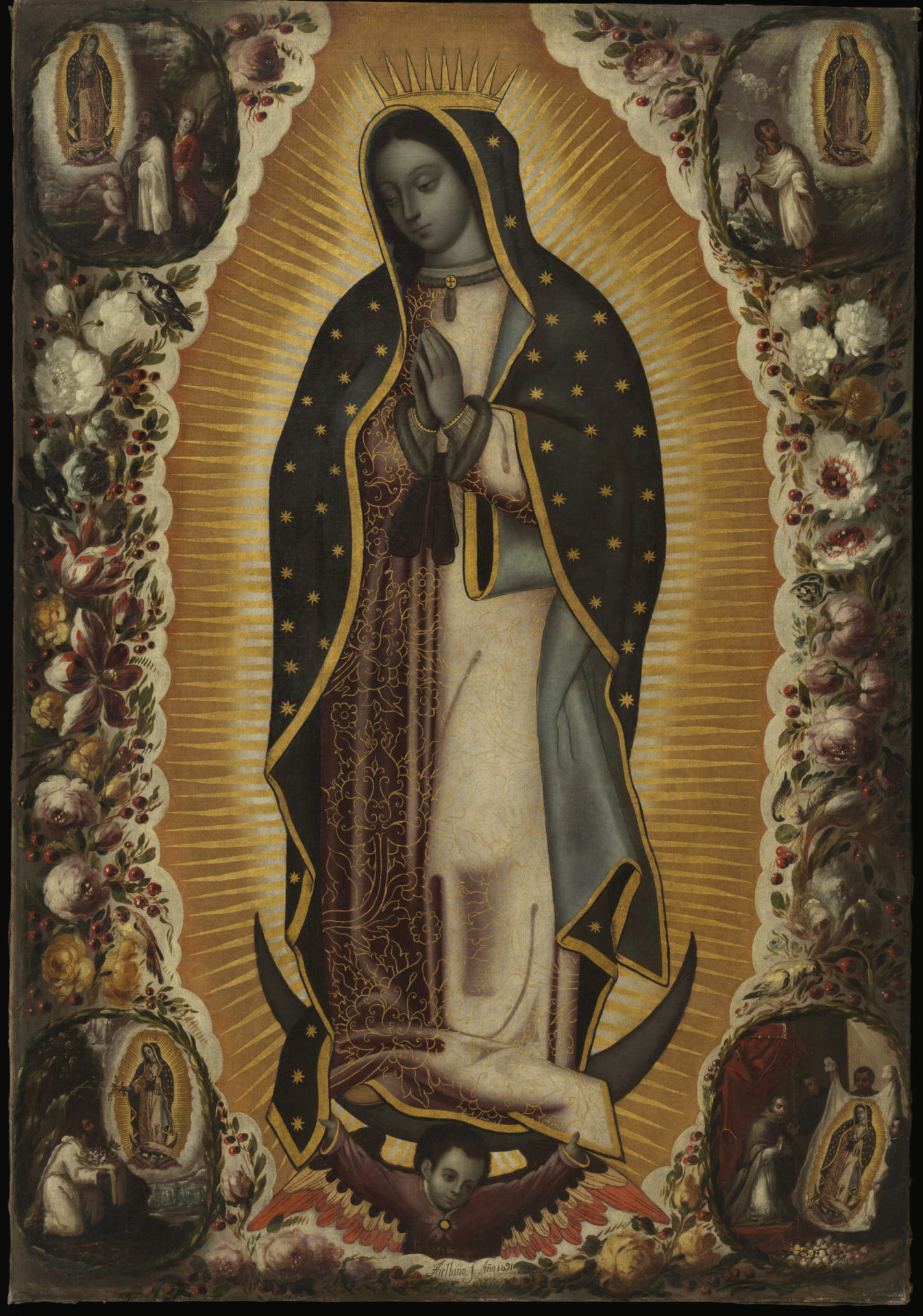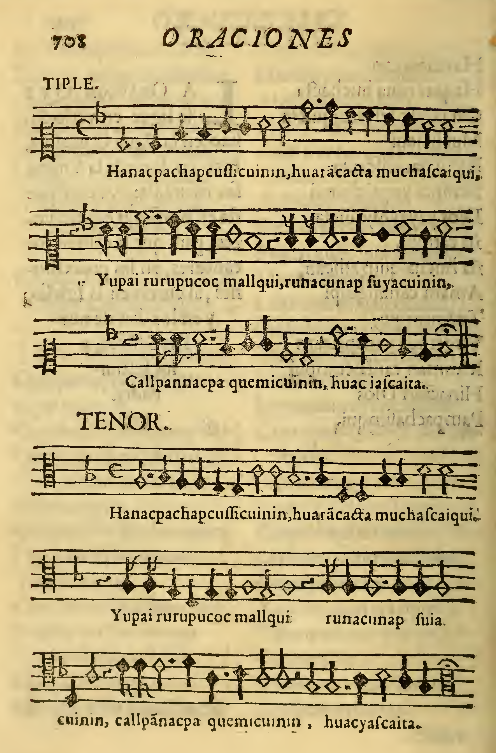Nuevo de Music City
Spanish American Culture 1500-1800: A Collaboration between Music City Baroque and the Frist

(Spanish Version Here: https://wp.me/pabEmc-2z1)
In collaboration with the Frist Art Museum, and paired with the museum’s current exhibition Art and Imagination in Spanish America, 1500-1800, the Music City Baroque is holding a concert at the museum on Saturday, January 13, 2024 titled Music and Musicians in Spanish Latin America, 1500-1800. The exhibition, which presents a mixed media collection of highlights from the Los Angeles County Museum of Art’s collection of Spanish colonial art, displays an amazing diversity of artists drawing from a broad range of traditions expressed in both sacred and secular art, pushing against the received monolithic conception of Spanish American art.
An excellent example of the collection’s wealth is Manuel de Arellano’s Virgin of Guadalupe (1691). The work is a meticulous 1691 copy of the original, an acheiropoietic image (not created by a human) of the virgin on a tilma (indigenous cape), which remains in Mexico City’s Basilica of Guadalupe where it is venerated as a relic of the virgin. This basilica is said to be the most-visited Catholic shrine in the world. According to the legend, and as depicted in the four corners of the painting, the Madonna appeared to Juan Diego three times so that he might convince the local Bishop to build her a chapel to the North of Mexico City. Her appearance on the tilma among rare flowers (depicted in the lower right in Arellano’s painting) is said to have ultimately convinced the Bishop. To the painting, which is a replica of the tilma, Arellanos added the inscription “touched to the original” (tocada a la original) to emphasize that the copy was authentic and shared a connection with the relic. Along with this beautiful work, the exhibition features a generous sample of paintings, sculptures and decorative arts for visitors to explore.
Similarly, according to an email from Board President Mareike Sattler, the Music City Baroque’s concert will present a variety of music from different regions” [of Spanish America] throughout the time period. A fine and related example of which is the 17th-century Quechua-hymn “Hanaq Pachap” from Peru. The hymn, a processional hymn to the Virgin Mary, likely written and composed by Franciscan priest Juan Pérez de Bocanegra in the Quechua language. As part of Bocanegra’s book Ritual formulario, the hymn is said to be the earliest work of vocal polyphony printed in the Western Hemisphere. Of the Hymn, Bocanegra said: “The Prayer that follows I did write in Sapphic verse, in the Quechua language, in honor of the Immaculate Virgin: the music is composed for four voices such that cantors may sing it for processions, upon entering into the church, and on days dedicated to our Lady, and on her feast days.” The lyrics to the hymn are carefully molded in order to maintain a syncretic balance—they might be interpreted in a way that accommodates both an orthodox Catholic belief even as they continue in the traditional Quechua culture.
 Excerpt from Second Verse: “Attend to our pleas, O column of ivory, Mother of God! Beautiful iris, yellow and white, receive this song we offer you; come to our assistance, show us the Fruit of your womb.” (Quechua: “Uyarihuai muchascaita Diospa rampan Diospamaman Yurac tocto hamancaiman Yupascalla, collpascaita Huahuaiquiman suyuscaita Ricuchillai.)
Excerpt from Second Verse: “Attend to our pleas, O column of ivory, Mother of God! Beautiful iris, yellow and white, receive this song we offer you; come to our assistance, show us the Fruit of your womb.” (Quechua: “Uyarihuai muchascaita Diospa rampan Diospamaman Yurac tocto hamancaiman Yupascalla, collpascaita Huahuaiquiman suyuscaita Ricuchillai.)
The hymn, with its homorhythmic construction, halting syncopation, vividly dramatic Marian lyrics and emphasis on native flowers, is considered to the aural equivalent of the Cuzco School of painting from the period in Peru. The Cuzco School drew a loose influence from the Flemish and Italian Renaissance, using bright colors of red, yellow and earth tones and lavish gold leaf in depictions of dramatic images. Although Arellano’s Virgin of Guadalupe is from the same period and carries some of these characteristics, its provenance is too far north to be of the Cuzco School.
One imagines that it will be in these broad cultural connections of belief, expression and cultural interaction that the exhibition and concert will find its greatest power. And, as Sattler relates, the concert promises a grand selection of works including music by Mexican born Mauel Zumaya, a fandango for Baroque guitar by Santiago de Murcia as well as “recently recovered pieces from the Jesuit missions in Bolivia” and others. While an exhibition that seeks to portray the art of several cultures across two continents through three centuries will, by necessity, be reductive and redundant, one must note, for the Music City, this collaboration between the Frist and Music City Baroque is sure to be a great start! The Concert is on Saturday, January 13th and the exhibition continues through January 28th in the Upper-Level Galleries of the Frist Museum.




